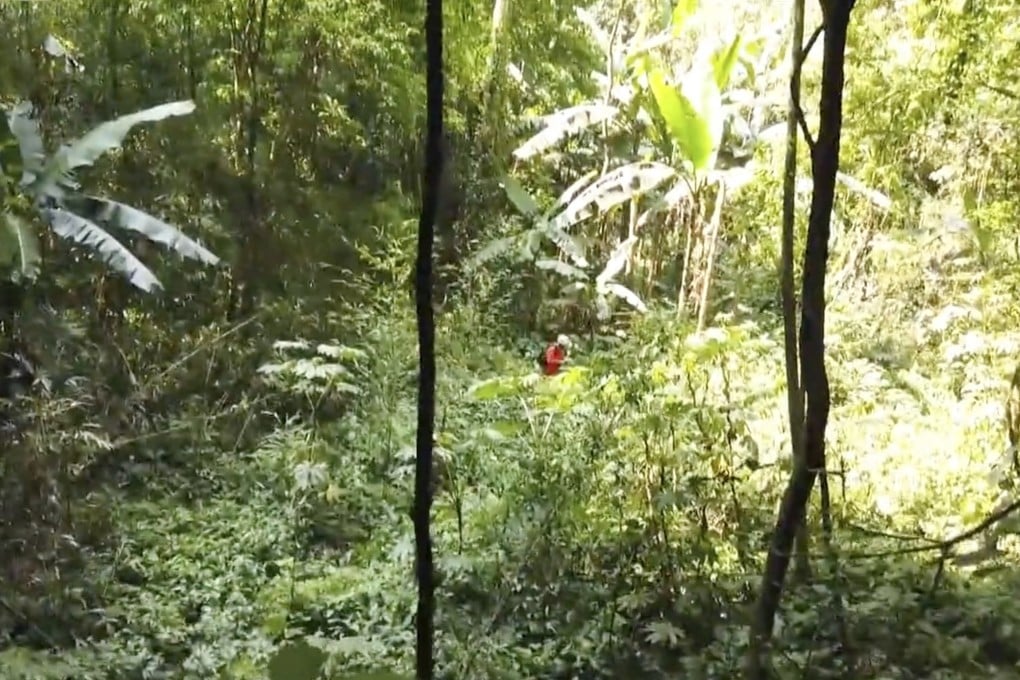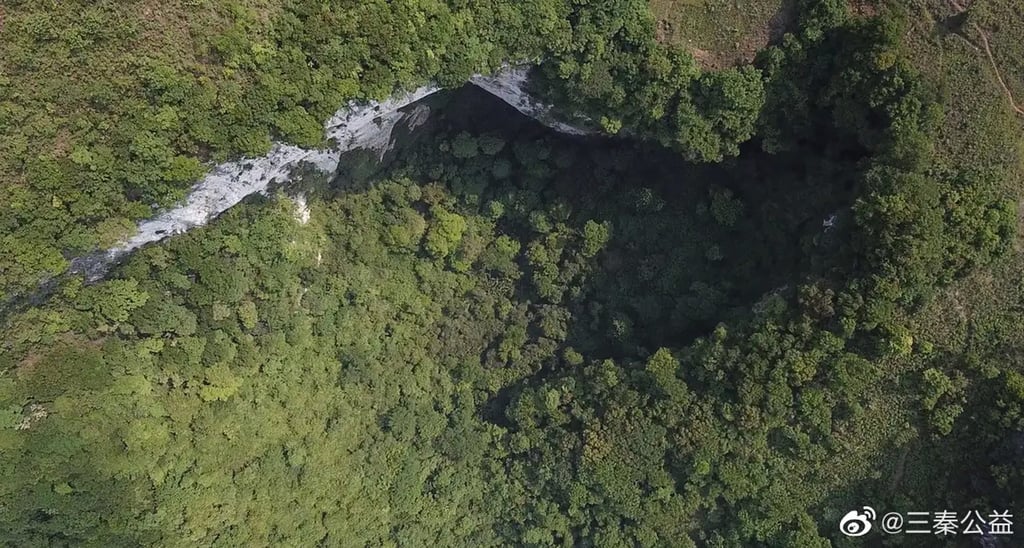What we know so far about the newly discovered forest in a massive Chinese sinkhole
- Giant sinkholes – also named ‘heavenly pits’ by Chinese geologists – offer unique habitats where a variety of plant and animal life can thrive
- The latest discovery has raised hopes that it will host unknown species and scientists have already identified some rare ones inside

Geologists found “shoulder-height” plants and ancient trees growing up to a height of 40 metres (130 feet), and are hoping that undiscovered plant and animal species may be found inside the forest in the southern region of Guangxi.

Zhang Yuanhai, a senior engineer from the Institute of Karst Geology at the China Geological Survey, said there were three big caves along the sinkhole walls along with the primitive forest at the bottom.
“[The discovery] is of high scientific and popular science value both on the evidence of the evolution of the sinkhole and the unique ecosystem that developed since its formation,” Zhang told state news agency Xinhua.
The trees at the bottom of the sinkhole were tall and skinny, stretching upwards to get enough sunshine, local newspaper Guangxi Daily reported.
Explorers found a large area of wild plantain at the bottom, as well as a rare species of square bamboo with thorns 2cm to 3cm long growing around its joints. Experts told the daily that this species could only grow in a good climate.